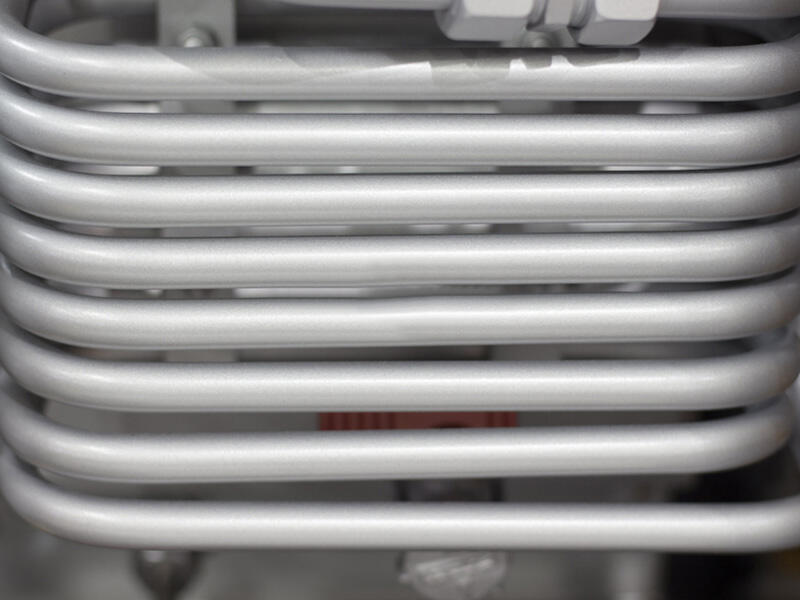The thermal stability of Hastelloy-3 alloy has been greatly improved compared to hastelloyb-2 alloy. HastelloyB-3 alloy has high resistance to stress corrosion, knife edge corrosion, pitting corrosion and corrosion in the heat-caffected zone of welding. , it can still maintain good plasticity when exposed to moderate temperatures. It has strong resistance to hydrochloric acid at any concentration and temperature, as well as resistance to sulfuric acid, acetic acid, acetic acid and phosphoric acid, and also has certain resistance to other oxide layers.
Specifications |
In stock, can be customized according to customer requirements |
Form |
Plate, rod, pipe, wire |
Classification |
Hastelloy |
|
C |
Cr |
Ni |
V |
Fe |
Co |
Mn |
Si |
W |
P |
S |
Mo |
|
≤0.02 |
14.50-16.50 |
Balance |
≤0.35 |
4.0-7.0 |
≤2.5 |
≤1.0 |
≤0.08 |
3.0-4.5 |
≤0.03 |
≤0.03 |
15.0-17.0 |
|
Density |
Elastic Modulus |
Hardness |
Melting point |
Thermal conductivity |
Thermal expansion coefficient |
Operating Temperature |
|
8.89g/cm3 |
2005.5KN/mm2 |
90HRC |
1323-1371℃ |
11.1 W(m.k) |
(25-100℃):11.2μm/m℃ |
-200-+400℃ |
Hastelloy C-276welding materials use ERNiCrMo-4 welding wire and ENiCrMo-4 welding rod. The welding material sizes are Φ1.0, 1.2, 2.4, 3.2, 4.0. The origin is American Hastelloy, American SMC, and Deutsche Nickel. Welding process Welcome to call us for instructions and instructions.
For the welding ofHastelloy C-276, you can choose to use it as the welding material or filler metal. If certain components are required to be added to the welds of Hastelloy C-276 alloy, such as other nickel-based alloys or stainless steel, and these welds will be exposed to corrosive environments, then the electrodes or wires used for welding are required to have The base metal has considerable corrosion resistance.
The welding performance of theC276 round baris similar to that of ordinary austenitic stainless steel. Before using a welding method to weld C-276, measures must be taken to minimize the decrease in corrosion resistance of the weld and heat-affected zone, such as Gas tungsten arc welding (GTAW), gas metal arc welding (GMAW), submerged arc welding or other welding methods that can minimize the corrosion resistance of the weld and heat-affected zone.

The manufacturing process of stainless steel and alloys involves multiple steps to transform raw materials into flat,rectangular sheets or plates made of stainless steel and alloys. Here are a few key steps for stainless steel and alloys:

Molten stainless steel and alloys are cast into large ingots or billets through a casting process.

During the hot rolling process,the thickness of the steel ingot is gradually reduced and elongated to form long strips or coils.

Annealing involves heating stainless steel and alloys to a specific temperature and then slowly cooling it.

Cold rolling is carried out through rolling mills to reduce thickness to meet customer specifications.
Wuxi Walmay Metal Co,Ltd is a comprehensive processing group of Alloy Steel、Forged Parts Fitting、Titanium Alloy、Stainless Steel、Special Welding Wireseries, and more than 800 specifications.
Our group has been engaged in the domestic and global market for more than ten years with rich steel experience and can offer professional advice for customers inapplications with different materials.
Machine cutting
Sheet cutting
plasma cutting
Dynamic waterjet cutting
sawing
Plank leveling
polishing
laser cutting
laser cutting
production cutting
Long product cutting
Bar and structural cutting
polishing
Heat treatment and annealing: Wuxi Walmay Metal can heat treat certain 400 series stainless steels.
Material Reliability Identification (PMI): Wuxi Walmay Metal can complete this testing in-house.
Ut Testing: Ultrasonic testing (UT) uses high-frequency sound energy to inspect and measure stainless steel products.
Our professional sales team answers your questions within 24 hours.
Copyright © Wuxi Walmay Steel Co.,Ltd All Rights Reserved